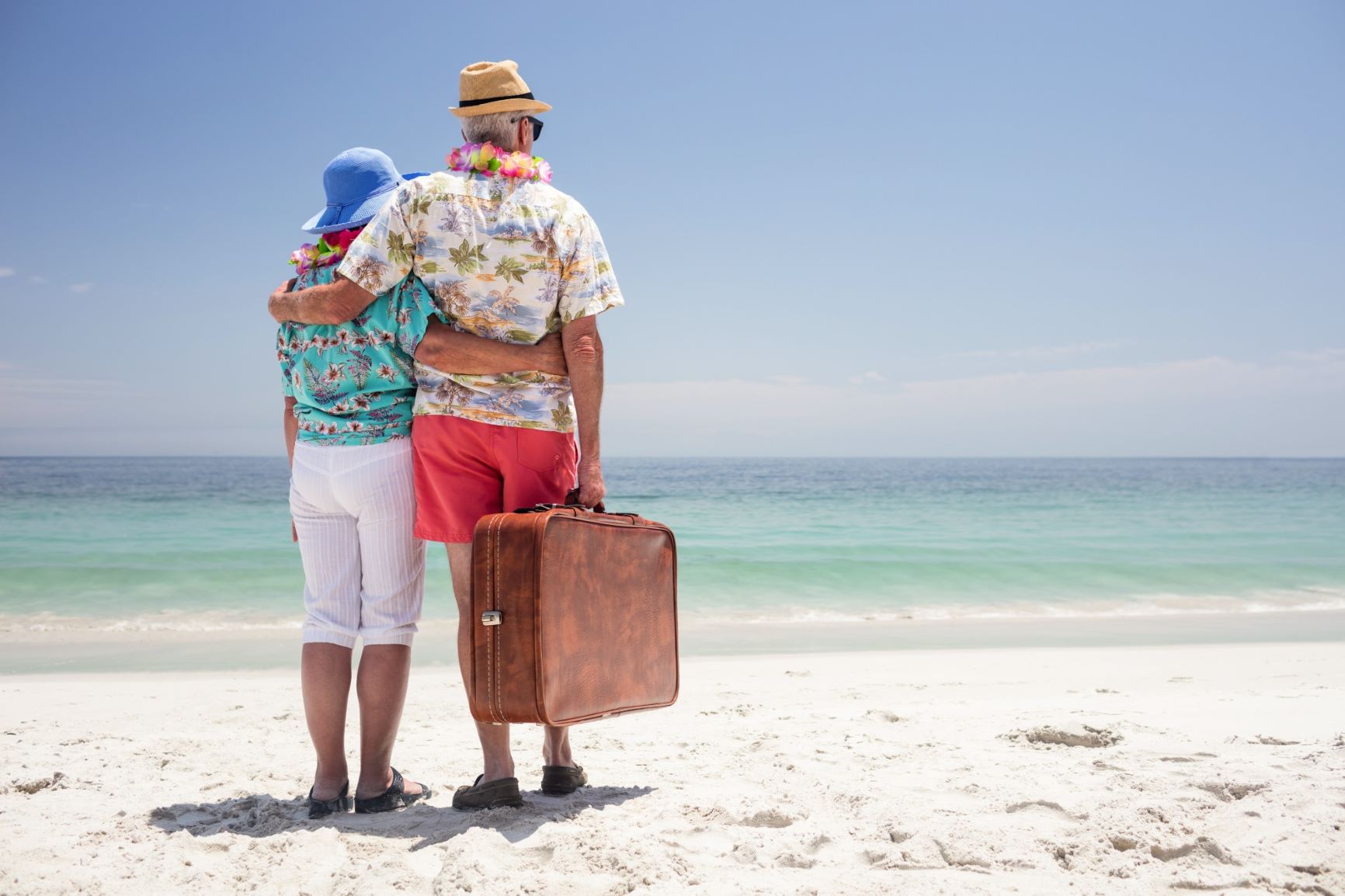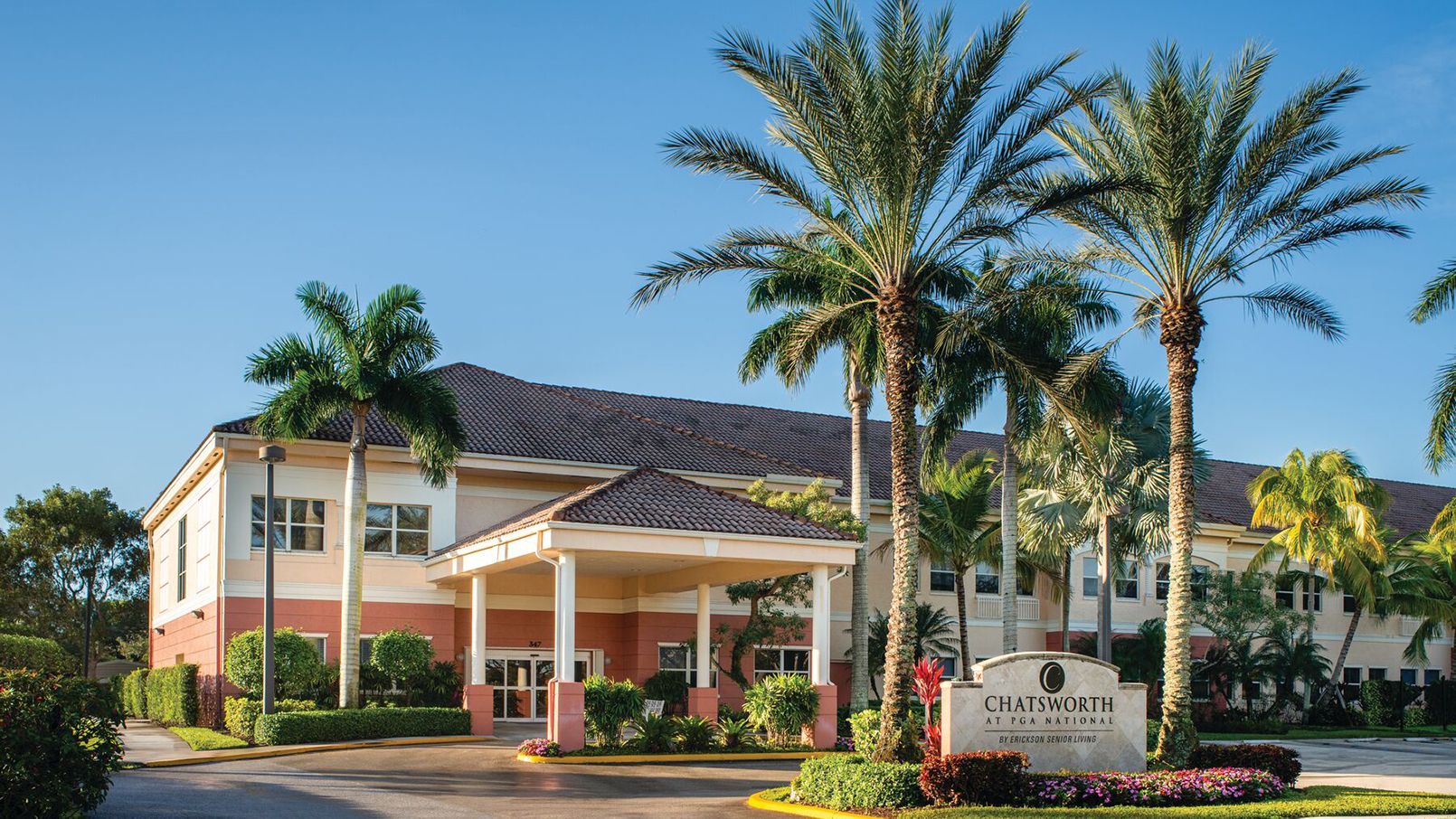Seniors Holiday Travel: Planning a relaxing and enriching getaway for older adults requires careful consideration of various factors. This comprehensive guide delves into popular destinations, suitable transportation options, accessible accommodations, and crucial health and safety measures. We’ll explore budget-friendly strategies, exciting activities, and the importance of travel insurance, ensuring a worry-free and memorable holiday experience for seniors.
From choosing the ideal destination based on mobility and climate preferences to navigating transportation logistics and selecting senior-friendly accommodations, this guide provides practical advice and resources to simplify the planning process. We’ll also discuss ways to create a personalized itinerary filled with engaging activities tailored to individual interests and physical capabilities, promoting both relaxation and exploration.
Popular Senior Holiday Destinations
Planning a holiday as a senior requires careful consideration of factors like accessibility, climate, and budget. This overview examines several popular destinations, highlighting their suitability for various mobility levels and offering insights for informed travel planning.
Five Popular Destinations for Senior Travelers
Choosing the right destination is paramount for a stress-free and enjoyable senior holiday. The following destinations cater to diverse needs and preferences, considering factors like climate and accessibility.
1. Hawaii: Hawaii offers a tropical climate, beautiful beaches, and a relatively relaxed pace of life. Many resorts provide accessible rooms and amenities, making it suitable for seniors with varying mobility levels. The warm climate is generally comfortable for older adults, although humidity can be a factor. However, the cost of travel and accommodation can be relatively high.
2. Charleston, South Carolina: This historic city boasts a charming atmosphere, rich history, and manageable walking distances within its historic district. Many attractions offer accessible entry and transportation options. The climate is mild throughout much of the year, although summers can be hot and humid. Charleston offers a good balance of culture, history, and relaxation at a potentially more affordable price point than Hawaii.
3. San Diego, California: San Diego’s pleasant climate and diverse attractions, from beaches to Balboa Park, make it a popular choice. Many attractions and transportation options cater to seniors’ needs. The city’s generally mild weather is a significant advantage. However, certain areas might involve inclines or require more strenuous walking.
4. Bar Harbor, Maine (Acadia National Park): While Acadia National Park presents some challenges regarding terrain, it offers stunning scenery and a range of accessible trails and viewpoints. Park rangers often provide information on accessible routes. The climate can be variable, with cooler temperatures and potential rain. This destination is ideal for seniors with good mobility who enjoy nature and outdoor activities, but those with limited mobility may find some areas inaccessible.
5. Portugal’s Algarve Region: This region boasts a warm, sunny climate, beautiful beaches, and a relaxed pace of life. Many resorts and towns offer accessible accommodations and amenities. The region is generally flat, making it easier to navigate for seniors with mobility concerns. The cost of living and travel can be relatively lower than some other popular destinations.
Cruise vs. National Park: A Comparative Analysis
Cruises and national parks represent contrasting holiday experiences, each with its own set of advantages and disadvantages for seniors.
Cruises: Cruises offer convenience and ease of travel. Most cruise lines provide accessible cabins and amenities. The ship acts as a self-contained resort, minimizing the need for extensive travel and navigating unfamiliar environments. However, the cost can be high, and the constant movement of the ship may cause some discomfort for seniors prone to seasickness. Furthermore, shore excursions may involve significant walking or other physical activities.
National Parks: National parks provide opportunities to immerse oneself in nature, offering stunning scenery and a variety of activities. However, many parks involve significant walking and navigating uneven terrain, potentially posing challenges for seniors with mobility limitations. Accessibility varies widely between parks and specific trails. Accommodation options within or near parks can range from basic to luxurious, affecting both comfort and cost.
Senior-Friendly Travel Destinations: Accessibility, Cost, and Activities
The following table summarizes key features of several popular senior-friendly destinations:
| Destination | Accessibility Features | Average Cost (per person, 7 days) | Recommended Activities |
|---|---|---|---|
| Hawaii | Many accessible resorts, transportation options available | $3000 – $5000+ | Relaxing on the beach, gentle hikes, cultural tours |
| Charleston, SC | Relatively flat terrain in historic district, accessible transportation | $1500 – $3000 | Walking tours, horse-drawn carriage rides, historical site visits |
| San Diego, CA | Accessible beaches, transportation, and attractions in Balboa Park | $2000 – $4000 | Visiting Balboa Park, exploring the Gaslamp Quarter, beach walks |
| Algarve, Portugal | Generally flat terrain, many accessible accommodations | $1200 – $2500 | Beach relaxation, exploring coastal towns, enjoying local cuisine |
Transportation Options for Senior Travelers
Choosing the right mode of transportation is crucial for a smooth and enjoyable holiday for senior travelers. Factors such as comfort, accessibility, and budget significantly influence this decision. This section will analyze various transportation options, highlighting their advantages and disadvantages for older adults.
Air Travel for Seniors
Air travel offers speed and convenience, especially for long distances. However, navigating airports can be challenging for seniors with mobility issues. Long flights can also be tiring. Many airlines offer assistance programs, including wheelchair assistance and priority boarding, mitigating some of these challenges. However, extra fees may apply for these services.
The potential for flight delays and cancellations adds another layer of complexity, especially for those with pre-existing health conditions or limited mobility. Pre-booking assistance and selecting aisle seats for easier access to restrooms are recommended strategies.
Train Travel for Seniors
Train travel often provides a more comfortable and relaxing journey than air travel. The larger seats, ability to walk around, and often more spacious facilities are advantageous for seniors. However, train journeys tend to be slower than flights. Accessibility varies depending on the train line and country. Advance booking is recommended to secure accessible seating.
Train stations generally offer better accessibility features than airports, including ramps and elevators, but pre-checking accessibility is still advisable.
Bus Travel for Seniors
Bus travel is generally the most affordable option, but it is also the least comfortable and slowest. Long bus rides can be particularly strenuous for seniors. Accessibility varies greatly between bus companies and routes. Smaller buses may not have wheelchair accessibility. For shorter distances, bus travel can be a viable option, particularly if cost is a primary concern.
Choosing routes with fewer stops can minimize discomfort.
Car Travel for Seniors
Driving oneself offers the greatest flexibility and control. However, long driving distances can be exhausting and potentially dangerous for seniors. Consider renting a car with adaptive driving aids if necessary. Fatigue and potential health issues should be carefully considered. Planning frequent rest stops is essential for longer journeys.
For descriptions on additional topics like sayur chap chai, please visit the available sayur chap chai.
For those who are no longer comfortable driving, using ride-sharing services or hiring a driver could be safer alternatives.
Assisted Travel Services for Seniors
Assisted travel services provide personalized support throughout the journey, addressing various needs, from airport transfers and baggage handling to in-destination assistance. These services are beneficial for seniors with mobility issues or those needing extra support. However, these services can be expensive. The level of support offered varies significantly between providers, so careful research is essential. It is vital to confirm the services offered and associated costs before booking.
Choosing Appropriate Transportation: A Decision-Making Flowchart
A flowchart visualizing the transportation decision-making process would start with the traveler’s budget as the initial node. If the budget is limited, bus travel is a likely option; otherwise, other options are considered. The next node would be the destination distance. Long distances would favor air travel (if budget allows and health permits), while shorter distances would allow for train or car travel.
Finally, the traveler’s health condition would be the final determinant. Limited mobility would necessitate selecting transportation options with high accessibility features, such as assisted travel services or accessible train routes, while good health could allow for more flexibility in choice. This flowchart simplifies the decision-making process, prioritizing budget, distance, and health in determining the optimal transportation method.
Accommodation Choices for Seniors
Choosing the right accommodation is crucial for a relaxing and enjoyable senior holiday. Factors such as accessibility, comfort, and proximity to amenities play a significant role in determining the overall travel experience. This section Artikels various accommodation options suitable for senior travelers, highlighting their features and accessibility benefits.
Senior travelers have diverse needs and preferences when it comes to lodging. The ideal accommodation balances comfort, accessibility, and affordability. Understanding the different options available allows for informed decision-making, ensuring a stress-free and memorable trip.
Hotel Accommodations for Seniors
Many hotels now cater specifically to the needs of senior travelers. Features such as accessible rooms with roll-in showers, grab bars, and wider doorways are becoming increasingly common. Some hotels also offer amenities like lower beds, adjustable height toilets, and emergency call systems. Examples include chains like Marriott and Hilton, which often have designated accessible rooms and staff trained to assist guests with disabilities.
These hotels frequently offer packages tailored to seniors, sometimes including transportation or discounts on meals. The level of accessibility varies, so it is always advisable to contact the hotel directly to discuss specific requirements before booking.
Resorts Designed for Senior Travelers
Certain resorts are designed with senior travelers in mind, offering a more relaxed and catered experience. These resorts often feature amenities such as on-site medical facilities, organized activities suitable for various fitness levels, and easily accessible common areas. Some may offer specialized programs focusing on wellness and relaxation. For example, some resorts in Florida and Arizona focus on providing a comfortable and relaxing atmosphere for older adults, offering amenities such as heated pools, accessible spas, and quiet lounges.
These resorts often emphasize ease of navigation and minimal physical exertion, making them attractive choices for those with mobility challenges.
Vacation Rentals Suitable for Seniors
Vacation rentals, such as apartments or villas, can provide a more independent and home-like experience. The key is to carefully select a property that meets accessibility needs. Look for rentals with features like single-story layouts, ramps instead of stairs, and wide doorways. Websites like Airbnb and VRBO allow for filtering by accessibility features, making it easier to find suitable options.
However, it is crucial to confirm the accessibility features directly with the owner before booking, as descriptions may not always be completely accurate. Furthermore, the lack of on-site staff may require more self-sufficiency. Choosing a rental in a convenient location, close to amenities and transportation, can help mitigate this potential drawback.
Types of Senior-Friendly Accommodations, Seniors holiday travel
The following list summarizes the various types of accommodations suitable for senior travelers, emphasizing their key features and benefits:
- Hotels with Accessible Rooms: Offer modified rooms with features like roll-in showers, grab bars, and wider doorways. Many major hotel chains offer this option.
- Senior-Specific Resorts: Provide amenities and activities tailored to the needs and preferences of older adults, often including on-site medical facilities and organized activities.
- Accessible Vacation Rentals: Offer single-story layouts, ramps, wide doorways, and other features to enhance accessibility and comfort. Careful vetting through platforms like Airbnb and VRBO is crucial.
- Retirement Communities with Guest Accommodations: Some retirement communities offer guest rooms or apartments for visitors, providing a convenient and familiar environment for seniors and their families.
- Cruise Ships with Accessible Cabins: Many cruise lines offer accessible cabins with features such as wider doorways, roll-in showers, and grab bars, allowing seniors to enjoy a cruise vacation.
Planning and Budgeting for Senior Travel: Seniors Holiday Travel

Planning a senior holiday requires careful consideration of various factors to ensure a smooth and enjoyable experience. This involves meticulous preparation in several key areas, from securing travel arrangements to managing expenses effectively. Thorough planning minimizes stress and maximizes the enjoyment of the trip, allowing seniors to focus on relaxation and creating lasting memories.
Steps Involved in Planning a Senior Holiday Trip
Effective trip planning involves a sequential approach. First, the destination should be chosen based on interests and physical capabilities. Next, travel dates are selected, considering factors like weather and potential crowds. Flights and accommodation are booked well in advance, especially during peak seasons, to secure the best deals and preferred options. Finally, activities and excursions are planned, keeping in mind accessibility and senior-friendly options.
Confirming travel insurance is also crucial.
Strategies for Budgeting for Senior Travel
Budgeting for senior travel requires a strategic approach to minimize costs while maximizing enjoyment. Seniors can explore various options to reduce expenses. Utilizing senior discounts offered by airlines, hotels, and attractions is a significant money-saver. Traveling during the off-season or shoulder season often results in lower prices for flights and accommodation. Consider all-inclusive packages, which can offer better value than booking individual components separately.
Choosing budget-friendly accommodation options, such as guesthouses or Airbnb, can also help significantly. Packing light reduces baggage fees, and opting for free activities, like walking tours or visiting parks, helps minimize daily spending.
Sample Travel Budget for a Week-Long Trip to Portugal
This budget example illustrates the cost breakdown for a week-long trip to Portugal for two seniors. Prices are estimates and can vary depending on the time of year and specific choices.
| Item | Cost (USD) |
|---|---|
| Round-trip airfare (per person) | $800 |
| Accommodation (7 nights, mid-range hotel) | $700 |
| Activities and excursions | $500 |
| Food and drinks | $700 |
| Transportation (local transport) | $100 |
| Travel insurance (per person) | $50 |
| Total cost (per person) | $1850 |
| Total cost (for two people) | $3700 |
Note: This budget excludes shopping and personal expenses. Prices are approximate and may vary depending on specific choices and the time of year.
Planning a senior holiday requires meticulous attention to detail, but the rewards are immeasurable. By carefully considering factors such as destination accessibility, transportation options, suitable accommodations, and health and safety precautions, seniors can embark on fulfilling and memorable travel experiences. This guide provides a framework for creating a personalized trip, ensuring a smooth and enjoyable journey for every traveler.


